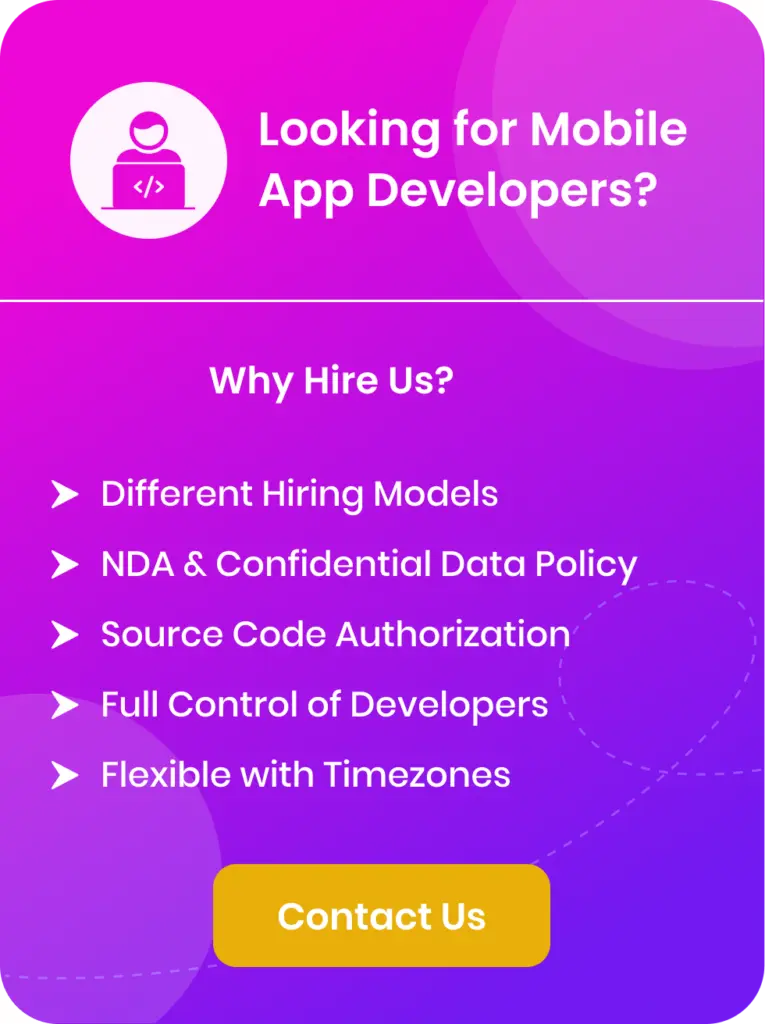In our digital world our way of accessing the internet and communicating with it has changed drastically. We’ve gone from conventional internet sites, to more dynamic web-based applications, and now we’re seeing the development of Progressive Web Applications (PWAs). PWAs provide a new method of web development that effortlessly combines the best aspects of both native and web mobile apps. This article will look at the concept behind Progressive Web Applications, their advantages, drawbacks and the ways they are revolutionizing the field in web-based development.
Understanding Progressive Web Applications (PWAs)
Progressive Web Applications are a relatively new innovation in web development, which has gained popularity in the past decade. These are web-based applications that offer an experience that is similar to native apps for users, while still retaining the main benefits of conventional web apps. This method aims to bridge gaps between native apps applications and native apps through the use of modern web technologies and the most effective practices.
PWAs are characterized by various fundamental characteristics:
1. Progressive Enhancement:
One of the fundamental tenets for PWA can be that they need to work for all users regardless of capability on their device or in their browser. They use progressive enhancement, which means they can be used on the simplest web browsers, but gradually add more features to modern browsers that are compatible with the latest technology.
2. Responsive Design PWA:
are designed with designs that are responsive, ensuring that they can seamlessly adapt to different sizes and orientations of screens from smartphones to desktops and tablets.
3. Application-Like Experience PWAs:
strive to provide a similar experience for users. They usually have a user interface that is similar to native mobile applications, that is smooth in its transitions, movements and animations.
4. Reliable PWAs:
have been designed to function reliably under the most challenging network conditions. They can load content offline, or when networks are not functioning properly providing users with a consistent experience.
5. Fast loading PWAs:
are optimized for speedy loading, thus reducing the time it takes for users to wait for the application to begin. This is achieved by using techniques such as lazy loading and caching.
6. Searchable:
unlike native apps, which must be downloaded from storefronts, PWAs are easily found by search engines on the internet and are easily shared using URLs.
7. Secure and safe PWAs:
are delivered through HTTPS, providing the security of your data as well as preventing the alteration of content. They also follow the best practices for web security which makes them a secure choice for both developers as well as users.
8. Installable PWAs:
are able to be installed on the user’s device by adding icons to home screens or the application drawer. This feature improves interaction and keeps them engaged.
The Advantages of Progressive Web Applications
PWAs have a variety of advantages over traditional web-based applications, including native applications. Let’s explore these advantages to discover the reasons PWAs are becoming popular with business and developers alike:
1. Compatible with Cross-Platforms, PWAs:
are created to work on every platform running an up-to-date web browser that includes Windows, macOS, Android, iOS, and more. Cross-platform compatibility helps reduce the time spent developing, as developers can build for multiple platforms with one codebase.
2. No installation:
is required As opposed to native applications PWAs don’t need users to undergo the process to download and install the app from the app stores. PWAs are accessible directly via a web address which makes it simpler for them to find and interact with your app.
3. Cost-effective Development:
Maintaining and developing separate codebases on different platforms can be expensive. PWAs speed up development by using a single source code base that is universally applicable and can result in substantial savings in costs.
4. Better Performance PWAs:
have been optimized for speed using techniques such as service workers that cache data and synchronization of background. This means quicker loading times and an easier user experience even when using slow or unstable networks.
5. Offline Function PWAs:
are able to function offline or under low network conditions, which makes them suitable for use in areas that have limited connectivity. This offline support is accomplished through service workers that store important assets and data.
6. enhanced user engagement PWAs:
can be installed on the device of a user and create a direct link to your website on the home screen. This can increase user retention and engagement.
7. search Engine Optimization (SEO): PWAs:
are searchable on web engines, which makes PWAs more easily accessible for prospective users. This may result in improved results for search engines as well as organic traffic.
8. Automated Updates PWAs:
are upgraded automatically, making sure that users are always connected to the most recent security patches and features, without the need for manual updates.
9. Secure and Reliable PWAs:
are delivered via HTTPS, which provides security and a secure connection. This builds trust with those worried about security and privacy.
Challenges in Progressive Web Application Development
Although PWAs have many advantages, they do not come without their difficulties. Businesses and developers who are considering PWAs must be aware of the following potential obstacles:
1. limited iOS Support PWAs:
are able to work very well for Android devices, support on iOS was historically more restricted. Yet, Apple has been gradually increasing PWA support with recent updates.
2. Storage Restrictions PWAs:
are susceptible to the limitations of storage in browsers which could affect its offline capability. Developers must be careful about managing storage of data and cache for a smooth offline experience.
3. Device APIs PWAs:
have access to a limited set device APIs, compared with native applications. Although this gap is narrowing, certain advanced hardware features might not be accessible to PWAs.
4. Performance on older Devices PWAs:
may not run as smoothly on older devices with less processor power or memory. Developers must optimize their PWAs to work with the wide array of device capabilities.
5. Application Store Restrictions:
Although PWAs can be downloaded on a user’s device, they do not enjoy the same level of exposure as apps found in conventional app stores. This could affect user awareness and the rate of installation.
6. development complexity:
The process of creating an HTML0 PWA that has advanced features could be difficult, especially for those developers who are not familiar with technology. It might require more efforts to incorporate features such as push notifications, service workers as well as offline assistance.
Examples of Successful Progressive Web Applications
Many organizations and businesses have taken PWAs on board and enjoyed advantages from this revolutionary method of web development. Here are some noteworthy examples:
1. Twitter Lite:
Twitter launched Twitter Lite as an PWA to offer a faster and more efficient data usage experience for those who live in regions with limited or slow internet access. The PWA is quick to load, allows offline access and uses less storage space than the native application.
2. Flipkart:
One of the largest Indian online marketplaces, has adopted the HTML0 PWA to enhance the shopping experience for mobile users. Their PWA provides fast loading times along with smooth navigation with offline and online access which results in a higher level of user engagement and conversions.
3. Starbucks:
Starbucks made use of the power of a PWA to boost its mobile ordering service. Customers can pay and order for their beverages using the PWA and it is accessible even in areas that have weak network signals. This has led to increased satisfaction of customers and more mobile-based orders.
4. Forbes:
Forbes has implemented a PWA to offer a faster and more enjoyable reading experience for its readers. The PWA can load content quickly even on slower networks, and also supports offline reading, which makes it a favorite among mobile users.
5. Alibaba:
Alibaba.com is the largest B2B marketplace online, has embraced PWAs to expand their reach to a larger public. The PWA gives users a smooth shopping experience as well as offline access to catalogs of products and is geared towards users from regions that have unreliable internet access.
Building Progressive Web Applications: Best Practices
If you’re a developer looking to develop their own PWAs it is crucial to follow the most effective guidelines to ensure a successful implementation. Here are a few key actions and tips:
1. Responsive Design:
Begin with a responsive layout that adjusts to different screens and sizes. Try your PWA on various gadgets and web browsers in order to guarantee that you have a consistent user experience.
2. Service Workers:
Install service workers to store important assets and to enable offline functions. Service workers play an essential part in enhancing the performance and reliability that you can enjoy the benefits of your PWA.
3. Application Manifest:
Create a manifest for your web application file that explains the way your PWA displays when it is installed on the device of a user. This includes defining the name of your app color, icons, and name.
4. HTTPS Serving your PWA:
using HTTPS to ensure the security of your connection. This is an essential requirement for PWAs in order to safeguard the user’s data and allow service providers.
5. Efficiency Optimization:
Optimize your PWA for speed by reducing page load time and limiting the use of large files. Techniques such as lazy loading and compression of images can aid in.
6. Progressive Enhancement:
Make sure that your PWA is compatible with basic web browsers. It will then gradually enhance the user experience when using modern browsers. This method helps to make your PWA accessible to a larger audience.
7. Installability Implement:
the required code to allow the users to download the PWA to their mobile devices. This typically requires the creation of a manifest for your web application and an application worker.
8. Push Notifications:
You might want to consider including push notifications to keep users active and informed, even if they’re not making use of your PWA.
9. Test and Monitoring Performance Test your PWA:
across a variety of types of devices as well as network configurations. Track performance and feedback from users to find and fix problems promptly.
The Future of Progressive Web Applications
Progressive Web Applications have already made an enormous impact on the development of web applications providing a viable alternative to the traditional web sites and native mobile apps. As technology advances and improves, PWAs will get more efficient and sophisticated and will be able to address some of the challenges currently faced and extend their capabilities.
Some of the trends and developments you should be on the lookout for in the coming years of PWAs are:
1. Better iOS Support:
Apple’s ongoing efforts to improve PWA capabilities on iOS devices could bring about an improved and consistent PWA user experience on all platforms.
2. Advanced Device Access Web APIs:
continue to improve, PWAs may gain access to a wider range of device capabilities, thus bridging that gap in between Web applications and native apps even more.
3. enhanced offline functionality PWAs:
are likely to be even more robust in the offline functionality, which will allow users to carry out complicated tasks without the need for an internet connection.
4. Integrating E-commerce:
E-commerce companies are likely to embrace PWAs in order to deliver better and faster shopping experiences, thereby driving technological innovation in this area.
5. Progressive Web Apps in Enterprise:
PWAs are making their way into the enterprise market which offer affordable and cross-platform solutions to internal applications and tools.
Conclusion
In the end, Progressive Web Applications represent an entirely new approach to web development giving the best of native and web experience. The cross-platform compatibility, better functionality, performance and offline capability and accessibility are attractive options for developers and businesses seeking to effectively engage their users in the modern age. As PWAs continue their evolution and expand their use they are set to define the future of mobile and web application development. Companies and developers that adopt this technology are in a good position to offer superior user experience and stay ahead of the curve in a constantly evolving digital world.


